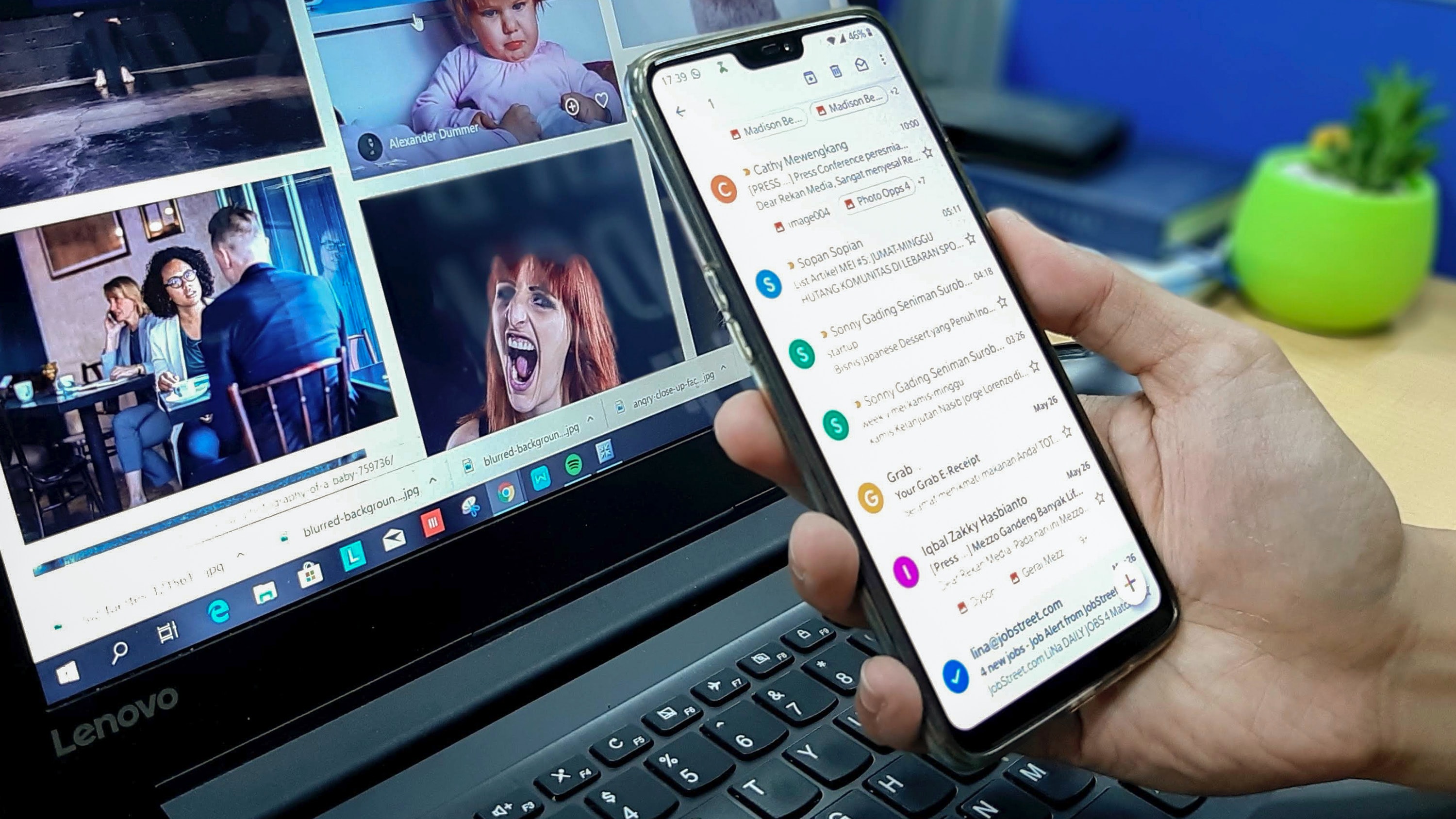YouTube SEO Guide: How to Rank YouTube Videos?

Every year, a lot of people go viral on YouTube, and more fail while trying. The only difference between the viral and failed content is the algorithm and proper YouTube SEO practices. The YouTube algorithm detects content with good SEO, promotes it in people’s feeds, and often features it on the YouTube home page. Meanwhile, random videos with titles like “my_first_video_final.mp4” with no description get lost in the sea of video content.
This blog will show you how to properly rank YouTube channel for maximum views and engagement.
What is YouTube SEO?
YouTube is the world’s second-largest search engine, with over 3 billion searches each month. It offers businesses and individuals an incredible opportunity to reach their target audience using engaging video content.

Before getting into the technical details, let us clarify some fundamentals and understand the true meaning of YouTube SEO. The goal of YouTube SEO services is to increase the engagement, views, and shares of your videos while also making them rank higher in search results.
YouTube prioritizes engagement measures like watch time, likes, comments, shares, and subscriber growth above traditional Google searches, which mostly rely on backlinks and keyword density. YouTube seeks to offer viewers the most relevant and engaging content by concentrating on these aspects.
Does SEO Really Work for YouTube?
Yes, YouTube hosts a plethora of content across a broad spectrum of niches, so it is very important to optimize your content so YouTube can properly categorize your videos and show them to the right audience.
For a new Youtuber, growing on the platform might seem impossible as only the big YouTubers seem to get all the views and engagements. However, with proper SEO, you can find the right audience for your content and enjoy likes and comments on your videos.
How to Rank Higher on YouTube
Okay, let’s get into the fun part and help you optimize your videos and skyrocket those views.
Choose a Target Audience
Selecting a target audience is the first step of your YouTube growth journey. Catering to a niche or target audience rather than sailing trends will help you grow in the long run and foster a healthy community of people.
Consider factors like age, gender, occupation, interests, language, location, and culture before selecting a target audience.
You can also research competitors’ audiences through their subscriber counts, comment sections, and engagement levels to gain insight into what works well within your specific industry niche. Armed with this knowledge, craft content themes, titles, descriptions, tags, and calls-to-actions designed explicitly for those groups based on their unique needs, desires, and circumstances.
Keywords Research: Setting the Foundation for Successful YouTube SEO
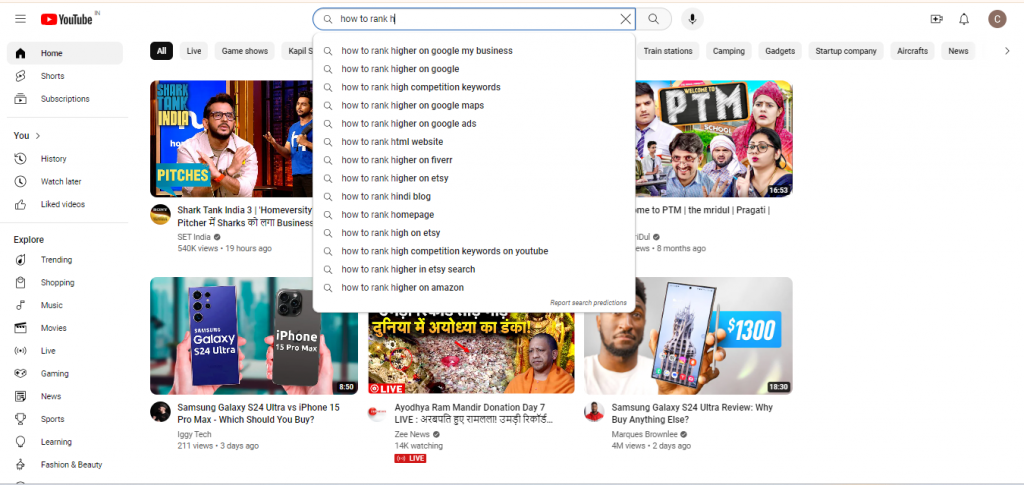
It’s important to do extensive keyword research before implementing optimization strategies. Finding relevant terms and phrases that visitors may be searching for on YouTube and Google is made easier with the aid of keyword research.
- Google Trends: With Google’s free YouTube SEO tool, you can track the frequency of a certain term search over time. To identify the most common keywords, you may also compare many terms side by side.
- Ubersuggest: Owned by Neil Patel, Ubersuggest is a paid service that offers data on search volume, difficulty, and CPC in addition to similar keyword ideas based on your seed phrase.
- YouTube Autocomplete: Based on user activity, YouTube recommends relevant terms as you type into the search field. These recommendations offer you an idea of what others are looking for and may be useful in forming your own keyword choices.
Once you have found your target keywords, integrate them naturally into your video title, description, tags, and closed captions. Just make sure not to stuff too many keywords into one place, as this can negatively impact your rankings.
Video Title: Crafting Compelling Headlines That Attract Viewers

Like blog titles, the video title also plays an important role in user engagement and search engine ranking factors. A well-crafted title containing targeted keywords increases clickability and encourages users to watch the complete video. Here are some YouTube SEO tips to help you craft an effective and engaging video title that attracts views and drives engagement:
- Keep it short and sweet – Limit your titles to around 60 characters to ensure they appear fully in search results and feed previews.
- Use relevant keywords – Integrate primary and secondary keywords into your title to improve discoverability and relevance.
- Be descriptive – Clearly convey the essence and topic of your video in your title to avoid confusion and misleading expectations.
- Add Numbers or special characters – Numbers catch attention and increase curiosity, while special characters such as brackets, parentheses, or hyphens add variety and interest.
Additionally, create curiosity or pose questions within the title to entice users further. Avoid using clickbait titles, as they can negatively impact the engagement of your videos.
Description: Providing Contextual Information for Improved Relevancy

A comprehensive video description allows search algorithms to better understand the context of the content being presented. Include relevant keywords organically while providing valuable information about the video topic. Place essential links, social media handles, and calls to action towards the top of the description since only the first few lines appear before the “Show More” button.
Follow these steps to effectively leverage video description:
- Write a detailed summary that accurately reflects the video’s contents while incorporating target keywords naturally.
- Utilize bullet points, numbered lists, and emojis to enhance readability and comprehension.
- End the description with a call-to-action (CTA) prompting viewers to engage further with your brand, e.g., “Subscribe now” or “Visit our website.”
Including timestamps for specific topics discussed also enhances user experience and encourages longer viewing sessions.
Tags: Leveraging Metadata for Enhanced Discoverability

Properly utilizing tags helps YouTube understand the subject matter of each video. Add a mix of broad and niche-specific tags, ensuring primary keywords are included. Be mindful of tag length – aim for single words or short phrases rather than long-tail keywords. Also, avoid stuffing too many irrelevant tags, which may negatively impact rankings.
- Research popular and niche-specific keywords related to your content using YouTube SEO tools such as Google Keyword Planner, SEMrush, or UberSuggest.
- Select up to 12 tags, including variations and synonyms, ensuring they accurately reflect the video’s theme.
Regularly update tags based on performance data and trending topics to maintain relevance and boost discoverability. Use a mix of tags to make sure that your video is popping up in the feed of your targeted audience.
Transcription: Boosting Accessibility and Search Engine Indexation
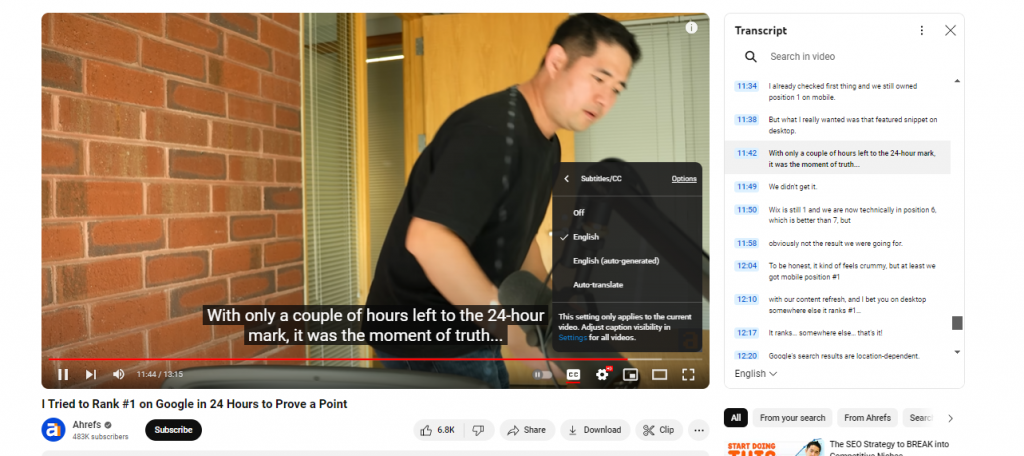
Adding closed captions and transcriptions improves accessibility for international audiences and those who are deaf or hard of hearing. Moreover, transcribed audio provides additional indexable content for search crawlers, increasing opportunities for higher rankings.
Ensure accuracy when uploading automated captions or invest time in manually editing them if necessary. Transcribing conversations between multiple speakers can enhance overall viewer comprehension and satisfaction.
Video Quality: High-quality videos are the Key
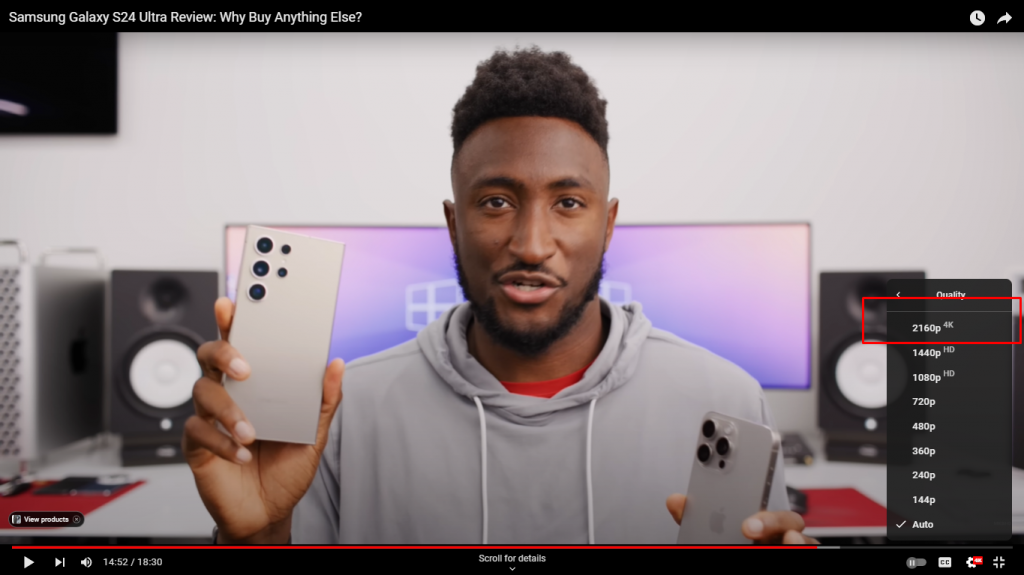
Content is king, but 68.2% of the videos on the YouTube homepage are of full-HD quality. In 2024, nobody wants to watch a grainy, low-quality video. Make sure you are filming your videos at least at 1080p resolution with proper lighting.
Invest in proper film equipment like DSLRs, Softboxes, and studio-grade microphones to improve your video quality and generate more views.
A great example of this is Marques Brownlee. Marquess is a tech YouTuber known for his high-quality tech videos. He is often seen at tech conferences carrying cinema-grade Red cameras to record product footage. His high-quality 4k videos easily distinguish him in a highly saturated tech review industry.
Create a Striking Thumbnail

Now, you must be wondering how a thumbnail is part of the SEO. Well, the thumbnail is the first thing that a viewer sees before opening a video. Creating a striking thumbnail that gives the audience an idea about the content is very important.
Below are practical YouTube SEO tips for designing compelling thumbnails:
- Choose vibrant colors and contrast to stand out from other videos.
- Ensure the main subject matter is apparent and identifiable.
- Display clear text overlays highlighting key benefits, features, or USPs.
- Incorporate strong typography and font styles to grab attention.
- Leverage custom branding elements and logos to reinforce recognition and recall.
For example, through the above thumbnail, you can easily understand the topic of the video without even reading the title of the video or its description.
Ask Your Audience to Leave Comments

Comments are another effective YouTube SEO tool for improving engagement. Encouraging viewers to leave comments on your videos can improve user engagement. While it may seem counterintuitive to ask for feedback since negative comments can appear, having active discussions under your videos shows YouTube that there’s engagement taking place, indicating that your content is resonating with your audience.
Moreover, positive comments create social proof, demonstrating to potential viewers that the content offered provides value, thereby increasing its credibility. To maximize comments, here are some YouTube SEO tips:
- Encourage Comments from Viewers: At the end of each video, you should think about asking viewers to comment on the content, soliciting ideas for potential future themes, or encouraging them to participate in a conversation. Instead of just asking for a yes or no response, make sure your questions are open-ended and promote meaningful answers.
- React to Comments: Showing viewers and YouTube that your channel is actively involved in the community is demonstrated by your rapid and regular responses to comments. It fosters trust between you and your audience, resulting in devoted viewers who will come back to see more of your videos. Also, pin good comments to encourage more people to leave relevant and good comments.
- Promote Discussion: Throughout the video, use calls-to-action (CTAs) to encourage viewers to take part in challenges, discussions, polls, and quizzes that are relevant to the subject matter. These interactive components encourage more participation, which drives more conversation and comments.
- Monitor Spammy Comments: Although encouraging viewers to comment is beneficial, occasionally, there may be spammers leaving low-quality remarks or promoting unrelated sites or brands. Ensure that irrelevant messages are filtered out and abusive ones flagged to maintain high standards of quality and professionalism.
Encourage People to Subscribe

Asking people to subscribe to your channel is one of the essential strategies for boosting YouTube SEO as well as building long-term relationships with your audience. Here are some ways to convince your viewers to hit that “subscribe” button:
- Feature a Call-To-Action (CTA): Including a CTA in every video encourages viewers to take action immediately after watching your content. Consider adding a verbal CTA within the video itself or displaying a visual banner inviting viewers to click the subscription button.
- Highlight Your Channel Traits: Emphasising what makes your channel unique and differentiating factors such as production values, expertise, creativity, originality, and humor help entice viewers to become recurrent visitors. Be proud of your identity, flaunt it, and make it easy for users to connect with you.
- Keep Consistent Upload Schedules: Establishing predictable upload schedules informs your audience of when they should expect new content, making it easier for them to remember to tune in next time. Regular updates keep your channel fresh in the minds of your viewers, preventing them from forgetting about your channel altogether.
Promotion: Amplifying Reach Through Cross-Platform Distribution
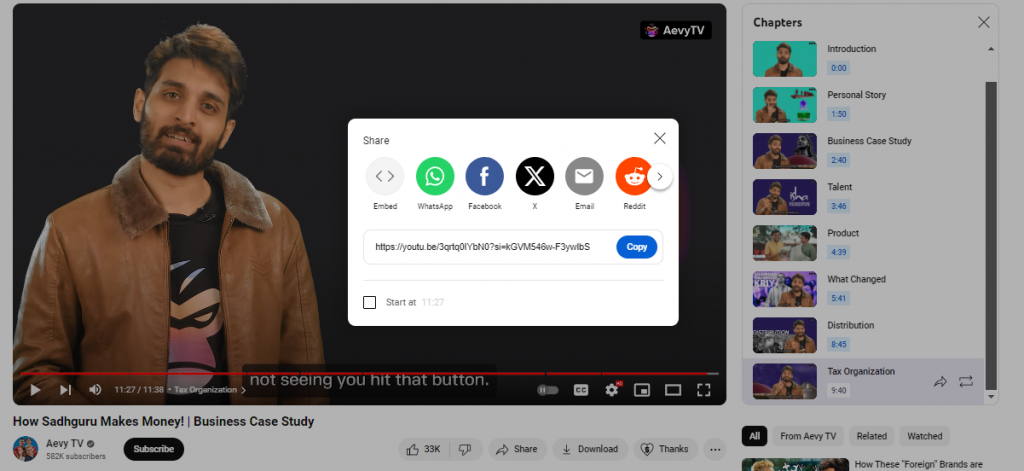
Sharing newly published videos across various social media platforms expands reach beyond YouTube’s platform. Promote new releases via email newsletters, blog posts, social media updates, and website embeds.
- Share on Facebook: Facebook can help you drive a lot of traffic to your YouTube videos, ensuring that you have an engaging video description.
- Share on Twitter: Just like Facebook, Twitter is also a great platform to promote your content. If you love to share your opinions through your videos, then Twitter is a great platform to start a chain of discussion.
- Share on LinkedIn: LinkedIn is a great platform if your YouTube videos are more focused on your business. With proper video titles and descriptions, the LinkedIn algorithm can recommend your videos to the right audience and help you grow your brand.
- Share on Quora: Quora is a fantastic platform to share how-to guides and in-depth videos that provide solutions to specific problems. It’s essential to link your videos and channel with relevant questions to promote them.
Collaborate with other creators or influencers within your industry to tap into broader audiences and generate backlinks pointing toward your channel. Implementing strategic promotional efforts drives external traffic sources and contributes positively to YouTube SEO.
Optimizing Your Channel for Better Performance

While focusing primarily on individual video optimization, channel optimization deserves equal attention since it affects overall visibility and user experience. Adhere to the following principles when managing your channel profile:
- Fill in all available fields, including bios, links, social media handles, and contact information.
- Customize your channel banner artwork and logo to mirror your channel’s identity and values.
- Consistently publish fresh content regularly to maintain audience engagement and loyalty.
- Collaborate with industry experts and influencers to broaden reach and exposure.
Analytics: Monitoring Performance Data for Continuous Improvement

Regularly monitoring and evaluating the metrics associated with your YouTube videos enables you to track progress, identify opportunities, and address issues proactively. Below are five vital KPIs worth measuring and analyzing:
- View Count measures how frequently people watch your videos and indicates popularity and demand.
- Watch Time refers to the total time viewers spend watching your content cumulatively across multiple sessions.
- Engagement Rate calculates the percentage of people who interacted with your video via likes, shares, or comments.
Test thumbnail images, posting times, and promotion tactics to maximize engagement and achieve optimal results.
Categorize Your Videos

Categorizing your videos is an essential step in improving their visibility and accessibility on YouTube because it helps viewers find what they need quickly and easily, thereby increasing engagement and watch time.
You can categorize your video under “Advanced Settings.” Categorizing your videos helps the YouTube algorithm properly group your videos in playlists with videos under the same categories. Proper categorization and grouping can help your videos wind up in popular playlists, gain exposure, and convert viewers into subscribers.
Similarly, you can also create a keyword-rich playlist of similar videos to boost your traffic and grow your YouTube channel.
Conclusion: Mastering YouTube SEO for Long-Term Growth
Optimizing YouTube videos for search engines requires consistent effort and dedication but yields substantial rewards in increased visibility and growth. By following this comprehensive guide, creators can confidently implement proven SEO practices that elevate their content above competitors and establish themselves as authoritative voices within their niches.
Remember, success doesn’t happen overnight – stay persistent, analyze performance data regularly, and adapt strategies based on new learnings to grow your channel.





